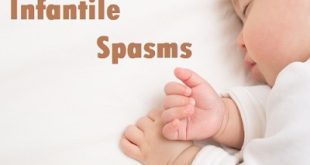Definition
Paresthesia is a disorder in the sensory perception in which, in the absence of external stimuli (like cold, warmth of pressure), spontaneous itching or tingling is perceived. In addition, an altered sensation to temperature and touch can occur. Paresthesia may also be an expression of neuropathy. Chronic paresthesia can be a symptom of underlying neurological diseases or nerve damage. Paresthesia may also occur as electrical pulses, it is then referred to as ‘shock like’ paresthesia
Paresthesia occurs suddenly without any warning and often it is short-term. Paresthesia is caused due to several reasons including neurological and orthopedic problems and for some people it is caused when excess of pressure is applied on the nerve. This phenomenon can be acute (short-term) for many people and it can be chronic (long-term) for some people.
Types
Paresthesia is of two type’s namely temporary or acute and chronic or long term.
Acute or Transient Paresthesia – As the name indicates the feeling of ‘pins and needles’ are short-lived and temporary. A person who has fallen asleep on his arm would experience the feeling of numbness or prickling for few minutes. This can be caused due to exerted pressure on the arm by the skull. This feeling would disappear once the pressure is relieved.
Chronic Paresthesia – In this case abnormal sensation is felt frequently and this occurs due to medical conditions like neurological or orthopedic problem. Severe disorders like multiple sclerosis, strokes or any serious problem in the central nervous system can induce tingling feeling in the arms and hands. Growing tumor in the brain or spinal cord can exert pressure on the surrounding regions causing this strange feeling. In some cases underlying nerves get entrapped like in the case of carpal tunnel syndrome.
Epidemiology
- Frequency: In the general population, an incidence of 4.3 per 10,000 person years has been reported. In people with diabetes mellitus, an incidence of 247 per 100,000 patient years has been reported.
- Race: No racial predilection is known.
- Sex: No gender proclivity is known.
- Age: Lateral femoral cutaneous neuropathies are most common during middle age. However, they have been reported in all age groups.
Causes of Paresthesia
There are specific causes of paresthesia, associated with its different types
Transient
- Legs crossed for a prolonged period of time
- Falling asleep with arm crooked under the head
- Breathing too fast
- Obdormition
- Whiplash injury
- Hyperventilation syndrome
- Acute arterial occlusion
Chronic
- Type II diabetes
- Problems with blood vessels
- Meralgiaparesthetica (numbness over outer thigh)
- Carpal tunnel syndrome
- Compression of a nerve in the spine (radiculopathy)
- Shingles
- Restless legs syndrome
- Transverse myelitis (spinal cord inflammation)
- Encephalitis (brain inflammation)
- Multiple sclerosis
- Stroke or transient ischemic attack
- Brain tumor
- Sometimes, excessive alcohol consumption and low B12 in the diet
- Intracerebral (brain) hemorrhage
Who is at risk for paresthesia?
Anyone can experience temporary paresthesia. Your risk of radiculopathy increases with age. You also may be more prone to it if you:
- Perform repetitive movements that repeatedly compress your nerves, such as typing, playing an instrument, or playing a sport such as tennis
- Drink heavily and eat a poor diet that leads to vitamin deficiencies, specifically vitamin B-12 and folate
- Have type 1 or 2 diabetes
- Have an autoimmune condition
- Have a neurological condition, such as MS
Symptoms of Paresthesia
Paresthesia, although a disease of its own, is also considered a symptom for many diseases. Some of the symptoms that occur with paresthesia include:
- Electric or tingling sensation
- Crawling sensation on skin
- Itching
- Numbness
- Foot drop (difficulty lifting front part of foot)
- Dysarthria (slurring words due to problems with muscles that enable speech)
- Muscular atrophy
- Anxiety
- Increased urination
- Increased paresthesia while doing a task or walking
- Muscle spasms
- Sensitive to touch
Complications
- Individuals with paresthesias can have difficulty with ambulation or grasping items in their hands when a particular extremity is affected.
- Individuals with impaired sensation may be unable to detect an injury (e.g., burn, puncture wound), which may result in limb- or life-threatening infection.
- Loss of sensation in the feet can lead to an increased risk of falling.
How is paresthesia diagnosed?
Diagnosis is based on history, physical examination and specific radiological studies.
Patient history: Information about the time of onset, duration and location of the paresthesia, as well as any pain or motor dysfunction associated with it have to be obtained from the patient. The patient should also be asked about past and current medical problems and medications, and any drug or toxic exposure.
Physical examination: The patient’s response to pain, touch, vibration, joint position and thermal sensation are measured using a sensory examination.
- Pain sensation is generally tested with a pin or needle (for sharp pain), or with a wisp of cotton (for soft touch). This serves to map the area of involvement and may provide information as to a spinal cord lesion or a peripheral nerve abnormality.
- Loss of vibratory sensation (checked using a tuning fork) occurs relatively early in a peripheral neuropathy such as those related to diabetes, alcoholism, vitamin B12 deficiency or dorsal column disease.
- In proprioception testing, the patient closes their eyes and is asked to indicate whether the finger or toe that is being held is being moved up or down. If there is a loss of position sense, it is associated with a nerve root lesion, a peripheral nerve abnormality or dorsal column disease.
- Thermal sensation is tested by putting the patients’ hand into test tubes containing water with varying degrees of temperature; patients with a normal thermal sensation should be able to distinguish between stimuli differing by a few degrees.
- A neurologic examination can be done to reveal signs of a neuropathy or myelopathy that may have been the cause of the paresthesia.
- Muscle groups should be assessed for strength and signs of atrophy. Any abnormalities of specific muscles are associated with specific nerve lesions.
Laboratory evaluation: This involves a complete blood cell count, a chemistry profile, and a urinalysis.
- Neurophysiologic testing, such as nerve conduction studies, and electromyography, are useful in establishing a diagnosis (if laboratory tests are not satisfactory) and prognosis. They are helpful in checking for large-diameter nerve conduction problems.
- Imaging studies like magnetic resonance imaging (MRI) and computed tomography (CT scan) can be performed to rule out some causes from the central nervous system.
Specific tests can be done to accurately determine the cause of paresthesia. These include:
- MRI or a CT scan of the affected area for the evaluation of a suspected herniated disc, entrapment neuropathy or suspected lumbar compression
- Chest radiograph to rule out a lung tumor or tuberculosis
- Lumbar puncture to eliminate a diagnosis of tertiary syphilis, carcinomatous meningitis (cancer that spreads from the primary site to the meninges) or a central inflammatory cause
- Nerve biopsy to diagnose inflammation of muscular arteries, sarcoidosis (inflammatory disease affecting multiple organs) and amyloidosis (building up of abnormal amyloid fibrils)
- MRI angiography helpful in diagnosing vascular abnormalities
Treatments for paresthesia
The treatment options for paresthesia depend on the cause. If there is an underlying medical condition causing the symptoms, then treating the condition should also treat the paresthesia.
Rest and bracing
- Rest is commonly recommended for a pinched nerve.
- It is important to stop the activities that are causing the nerve compression to allow the tissues to heal. This may mean resting, or sometimes a brace or splint is needed to stop movement of the area.
- For example, a wrist brace can be used to immobilize the wrists in a person with carpal tunnel syndrome.
- However, using a brace for extended periods of time can cause other problems. Hence, the recommendations of someone’s doctor should always be followed.
Physical therapy
- Physical therapy can be used to build strength in the muscles surrounding the affected nerve. Stronger muscles can help relieve tissue compression and prevent it reoccurring.
- Fit muscles can also improve flexibility, the range of motion and mobility.
Medications
- Some medications, such as ibuprofen (Advil, Motrin) and naproxen sodium (Aleve) and even steroid injections into the affected area can be given to relieve pain and decrease swelling and inflammation.
- The application of topical ointments that contain, ‘capsaicin,’ the substance that makes hot peppers hot, might provide relief from paresthesia. It can also be helpful to wear clothes and shoes that are loose-fitting.
- For long-term paresthesias due to fibromyalgia, medications, including pregabalin (Lyrica) or duloxetine (Cymbalta), may be useful.
Surgery
- If these treatments do not relieve the symptoms, surgery may be needed to reduce the pressure on a pinched nerve.
- Surgery can mean releasing the carpal ligament, removing a bone spur, or even part of a herniated disk in the back.
- The type of surgery will depend on the specific symptoms a person is experiencing, as well as their cause.
Acupuncture
- Acupuncture and massage are also believed to provide a level of relief from the symptoms of paresthesia. Self-massage with aromatic oils is sometimes helpful as well.
How do you Prevent Paresthesia?
Paresthesia can be prevented in the real sense of the term only by seeking early medical care and complying with medications regularly. The presence of chronic paresthesia indicates poor control of a pre-existing medical condition. If the disease is under control, paresthesia might not occur.
- Health Tips
- Chronic paresthesia indicate underlying nerve damage.
- People experiencing numbness in their soles should always wear special orthotic footwear and not move around with naked feet. They can unknowingly burn or hurt their feet.
- Patients should avoid holding anything heavy as they might lose the grip and hurt themselves.
- They should also avoid obstacles like climbing stairs.
 Diseases Treatments Dictionary This is complete solution to read all diseases treatments Which covers Prevention, Causes, Symptoms, Medical Terms, Drugs, Prescription, Natural Remedies with cures and Treatments. Most of the common diseases were listed in names, split with categories.
Diseases Treatments Dictionary This is complete solution to read all diseases treatments Which covers Prevention, Causes, Symptoms, Medical Terms, Drugs, Prescription, Natural Remedies with cures and Treatments. Most of the common diseases were listed in names, split with categories.








I feel severe pain in my head at night and neck pain.I also feel a burning sensation in my head and a tingling sensation in my upper head
Please consult a doctor.
i experience severe pain inside my head at night and a tingling sensation in my upper head. I also get pain in my neck and a burning sensation in my upper head
Consult a doctor to avoid serious effects in future.